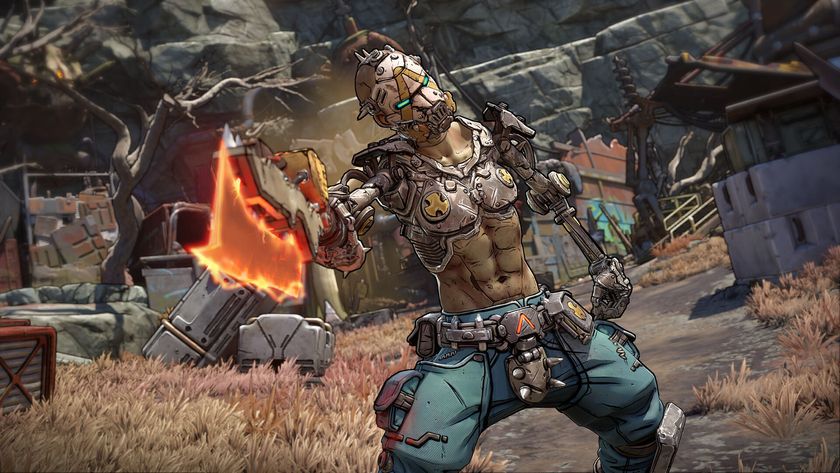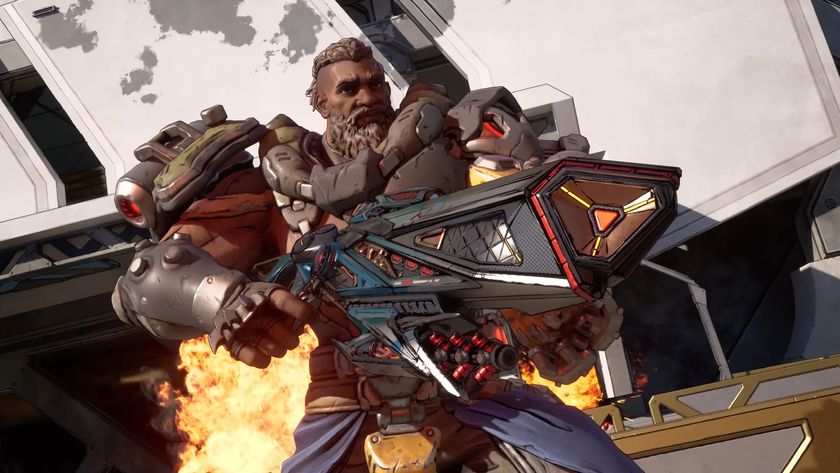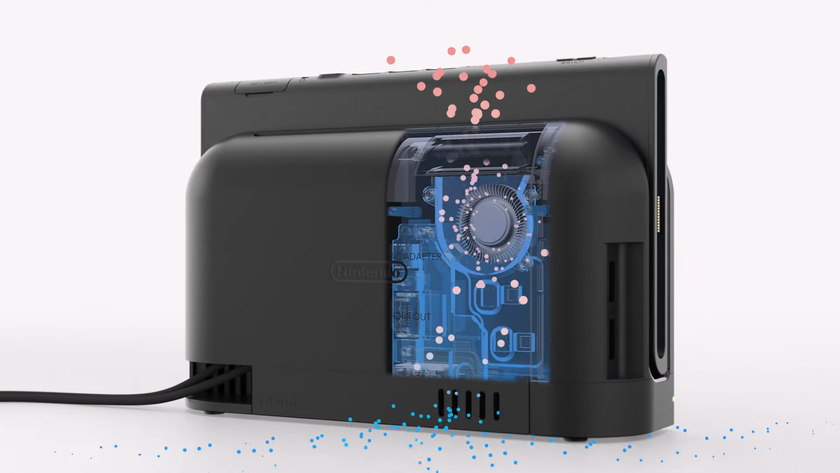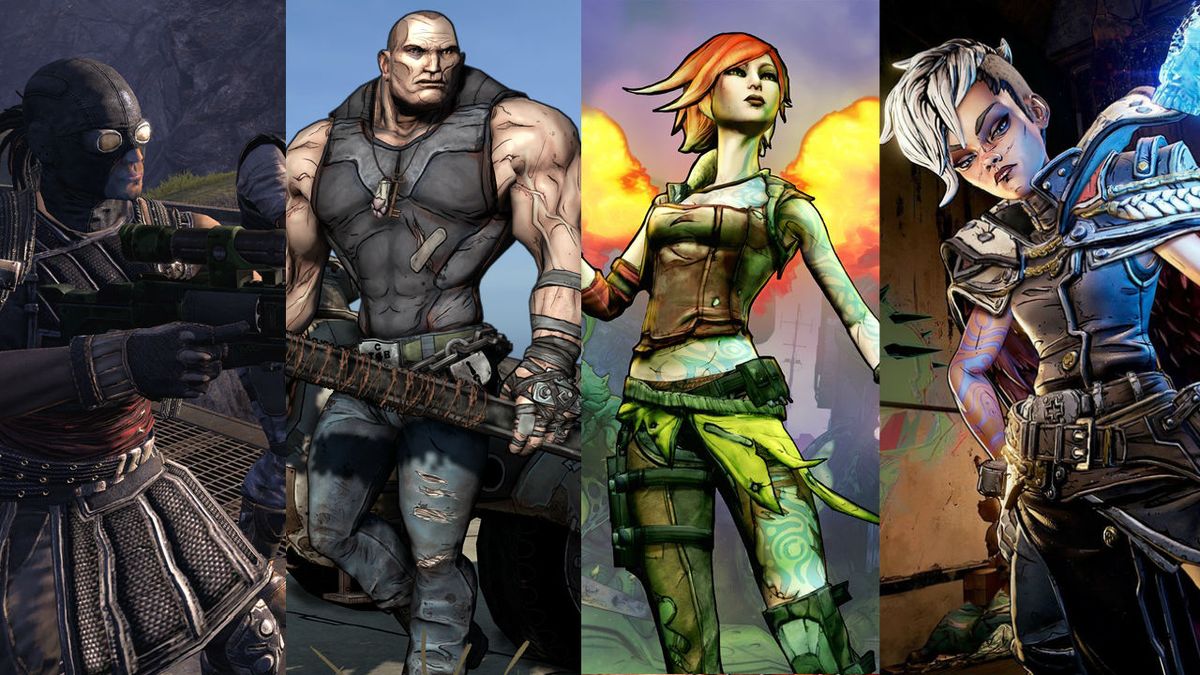
Every video game in existence has a secret history. In every studio there's a story that has never escaped its office walls; tales of strife, contentious design decisions, and eleventh-hour changes that can ultimately make or break a game. That's because the process of game development is a messy business, a confluence of different skill sets converging to create something that resembles a moving puzzle – the pieces forever threatening to fall out of place, ruining the picture.
I've heard plenty of these history lessons in my time covering the industry, but two of my favourites are actually out there in the public domain to a degree, from two franchises that share an entwined destiny: Halo and Borderlands. The first surrounds Halo: Combat Evolved and the infamously overpowered M6D pistol; a result of Bungie co-founder Jason Jones secretly changing the code to up the power of the pistol at the eleventh hour because he was unhappy with the weapon's performance, unaware of the chaos he had ultimate wrought until Halo was in the hands of players on November 15, 2001. The second is with respect to the original Borderlands, a game that skirted so close to fading into obscurity that it's kind of mind-blowing – yet another example of an eleventh-hour change that changed the course of the games industry forever.
"You know, when I first started at Gearbox, Borderlands was just this cute side project we were doing between Brothers in Arms games," Chris Brock tells me, laughing as he does. Behind where the managing producer of development for the Borderlands franchise is sat, there's a wall with a vibrant Borderlands 3 logo splashed across it. As Brock looks from it to me, he remarks, "like, none of us ever believed that we would get here".
There's a good reason for that.
A swing and a miss








Borderlands was conceptualised as 'Halo meets Diablo', at least that was the plan when Gearbox started work on the project in 2005. It would constantly struggle to define the game's identity as a result, with the studio wrestling over whether the core of the game would be an FPS or an RPG. It is, of course, clear now which of those design philosophies won out in the end, so much so that Gearbox eventually became tipped to take over the Halo franchise following the success of Borderlands 2, before 343 Industries was established by Bonnie Ross to keep the franchise in-house. But the battle between genres wasn't the only identity crisis Borderlands was engaged in throughout its protracted development. In fact, the other happened in full view of the public, although it's been all but lost to the annals of history.
Borderlands was revealed to the public at E3 2008, and demoed at the Leipzig Games Conference that same year, just under 12 months out from its release in 2009. If Gearbox was struggling to settle on Borderlands' DNA internally, it was certainly struggling to showcase it publicly too. The studio would throw words like "retro sci-fi" around to describe the game’s style, outlining a world that would be "realistic" and "mechanical" in design. That decision immediately put it on a collision course with the likes of Fallout 3, Rage, and Resistance, among countless others. The core gameplay – the haptic gunplay, procedurally generated arsenal, audacious enemies, and yes, even Claptrap – were all there in that original vision of the game, but it was drowning in the post-apocalyptic colour palette that was so popular at the time.
"It's funny because, when we were developing Borderlands, it had a much more realistic art style," Brock says, reflecting on his 13 years at Gearbox. "When you look back at the landscape at the time, there was this movement of just a ton of post-apocalyptic brown and grey games. We were looking at Rage, and it was beautiful. Then there was Fallout 3, and it was beautiful. And we were like, 'man, do we really want to try and compete in this space? Is that what we want to do… like, how would we stand out?' We [knew] we had this really cool game, but if nobody will look at it, it won't matter."
Sign up to the GamesRadar+ Newsletter
Weekly digests, tales from the communities you love, and more








And so, in a last minute move that seems almost inconceivable for the industry today, Gearbox and publisher 2K Games greenlit a massive overhaul of the game's art assets and a number of its core systems, while remaining committed to hitting an October 2009 release date across PC, PlayStation 3, and Xbox 360 simultaneously. "Internally, it was actually sort of divisive at the time. It was not like we were 100% all-in. We were more like 60/40," he tells me, pausing for thought. "It's funny, really, because now I can't imagine it looking any other way."
Gearbox set to work on a 'concept art style' that should never have worked, largely because there was really nothing like it in the FPS space at the time to even get a benchmark of potential success. The cost of overhauling assets at this stage of production is astronomical, but it also had a human cost too – Borderlands' original art director was so demoralised by having three years of work thrown out so close to the finish line that she quit the project and left the industry. The reality of what happened behind the scenes during this period is a part of the secret history of Borderlands that will likely never be revealed in full.
When it works, it works
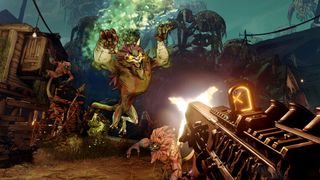
So all we can really do now is look at the result of the decisions that were made. Borderlands was a critical and commercial success, one of the most popular new IPs of the generation, and it spawned a genre-dwarfing franchise. Would Borderlands have been the success that it is today – would Borderlands 3 be releasing a decade later, no less – had Gearbox stuck to its guns, ignored internal testing reports, and taken a gamble on releasing the game as it was first revealed? "With the original art style? No, I don't believe it would have. I think that, at the time that we made that change, love it or hate it, everybody noticed it," Brock continues, noting just how important visibility is in this industry. "Just to stand out like that was a big deal. Borderlands looked very beautiful in its own way."
Funnily enough, here I am with Borderlands 3 in my hands and the series still looks beautiful in its own way. That cel-shaded art style still stands out, a decade on from its debut, able to enrapture the attention of anybody that lays their eyes on it. In many respects, Borderlands helped usher in a wave of shooters infused with exuberant energy. Otherwise, who knows how long it would have taken to break out from the cycle of muddy-brown games that defined that era of the FPS?
Brock is well aware of this, especially given difficult it has been for Gearbox to keep things fresh when returning to the franchise after an extended hiatus. "The question of how do we take the art style to the next level is a good one. It has been tricky because when you heavily stylise a game, they age better. So that makes it harder to know where to push, right?", Brock tells me, explaining that Gearbox has had to focus on ensuring the art assets really pop for the series’ first entry built for the current generation of hardware. "I think where you really see it is in the motion of it all; it's in the lighting, the visual effects, and animation. Like, sure, we might have made that rock right there look better than it used to, but we know that people aren't really going to notice it. We have a whole new lighting engine, a physics-based renderer.... We’ve basically replaced light sources, and so it's almost like we have a cinematographer going in there to light each scene, and it's really beautiful."
Brock and I fell down this rabbit hole as we were discussing the number of throwbacks and fan-favourite moments that populate the Borderlands 3 experience. It may as well be entitled Borderlands 3: For The Fans; there are weird variations to the art style thanks to fun missions set in virtual reality, and a variety of new exotic biomes as Borderlands 3 takes its action away from Pandora. So why not a mission inspired by the original art style? "Oh, like the very first one? Like, the photo-real look?" Brock starts, laughing as he asks how I even remembered, laughing still as I tell him I had to dig out old magazines to prove to myself that it did once exist. "No, honestly, no, no… I really can't even imagine going back to anything like that again."
Borderlands story recap: Catch up on the history of Pandora in time for Borderlands 3

Josh West is the Editor-in-Chief of GamesRadar+. He has over 15 years experience in online and print journalism, and holds a BA (Hons) in Journalism and Feature Writing. Prior to starting his current position, Josh has served as GR+'s Features Editor and Deputy Editor of games™ magazine, and has freelanced for numerous publications including 3D Artist, Edge magazine, iCreate, Metal Hammer, Play, Retro Gamer, and SFX. Additionally, he has appeared on the BBC and ITV to provide expert comment, written for Scholastic books, edited a book for Hachette, and worked as the Assistant Producer of the Future Games Show. In his spare time, Josh likes to play bass guitar and video games. Years ago, he was in a few movies and TV shows that you've definitely seen but will never be able to spot him in.
